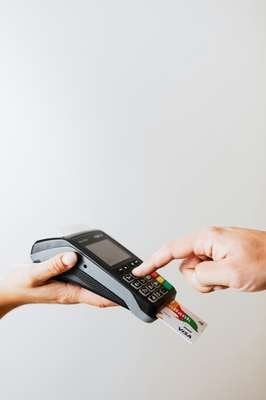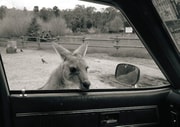Aussie woman shares $148.50 bill shock after visiting local mechanic
By
Danielle F.
- Replies 29
The digital age is often lauded for its convenience.
However, these quick transactions often come with a price.
A woman's recent visit to her local mechanic reflected the public's sentiment about card payments, particularly towards surcharges.
Adelaide local Wendy Armitage was about to settle a $900 bill for car repairs through the tap-and-go payment method.
However, she noticed a sign that almost left her out of pocket.
The sign indicated a staggering 16.5 per cent surcharge for using contactless payment.
For her $900 bill, Ms Armitage could have paid an additional $148.50 for surcharges alone.
'I was quite shocked, to be honest,' Ms Armitage shared.
Yet, Ms Armitage's quick thinking saved her a small fortune.
After confirming the surcharge with the owner, she opted to insert her card instead, which incurred a mere 30-cent charge.
'I saved myself quite a lot of money to dine out on,' she said, relieved.
Ms Armitage's experience shed light on a broader issue affecting Australians nationwide.
According to The Reserve Bank of Australia, Aussies pay almost $1 billion in card surcharges annually.
This staggering figure highlighted the impact of these fees on consumers' wallets.
The Albanese government took note of the data and has considered a ban on debit card surcharges.
The proposed ban could start by January 2026.
The Reserve Bank still has to review the proposed ban as it examines the costs merchants face from card payments and the surcharging arrangements.
Assistant Treasurer Stephen Jones expressed concern for both consumers and small businesses.
'We don't want the small businesses to be the meat in the sandwich here,' Treasurer Jones shared.
While some businesses may apply surcharges beyond the costs levied by banks, the blame should not solely lie on them.
Australian Banking Association Head Anna Bligh pointed out that many businesses surcharge over and above what they're allowed to do.
Inserting a card into an EFTPOS machine should typically cost less than 0.5 per cent for every transaction.
Meanwhile, contactless Visa and Mastercard payments could range from 0.5 to 1.5 per cent, depending on the card type.
A $100 purchase could incur an average additional cost of 28 cents for the EFTPOS, 52 cents for Mastercard, 47 cents for Visa, and a whopping $1.88 for Square, a digital payment provider.
While larger companies often absorb these costs, smaller businesses could pass these costs on to customers.
So, what can you do to avoid being caught off guard by such fees?
Always check for any surcharge notices before making a payment.
Consider other payment methods, including cash, and always ask the merchant about the best way to pay to avoid unnecessary charges.

Have you ever been surprised by a card surcharge? How do you handle these additional fees? Share your experiences and money-saving tips with us in the comments below.
However, these quick transactions often come with a price.
A woman's recent visit to her local mechanic reflected the public's sentiment about card payments, particularly towards surcharges.
Adelaide local Wendy Armitage was about to settle a $900 bill for car repairs through the tap-and-go payment method.
However, she noticed a sign that almost left her out of pocket.
The sign indicated a staggering 16.5 per cent surcharge for using contactless payment.
For her $900 bill, Ms Armitage could have paid an additional $148.50 for surcharges alone.
'I was quite shocked, to be honest,' Ms Armitage shared.
Yet, Ms Armitage's quick thinking saved her a small fortune.
After confirming the surcharge with the owner, she opted to insert her card instead, which incurred a mere 30-cent charge.
'I saved myself quite a lot of money to dine out on,' she said, relieved.
Ms Armitage's experience shed light on a broader issue affecting Australians nationwide.
According to The Reserve Bank of Australia, Aussies pay almost $1 billion in card surcharges annually.
This staggering figure highlighted the impact of these fees on consumers' wallets.
The Albanese government took note of the data and has considered a ban on debit card surcharges.
The proposed ban could start by January 2026.
The Reserve Bank still has to review the proposed ban as it examines the costs merchants face from card payments and the surcharging arrangements.
Assistant Treasurer Stephen Jones expressed concern for both consumers and small businesses.
'We don't want the small businesses to be the meat in the sandwich here,' Treasurer Jones shared.
While some businesses may apply surcharges beyond the costs levied by banks, the blame should not solely lie on them.
Australian Banking Association Head Anna Bligh pointed out that many businesses surcharge over and above what they're allowed to do.
Inserting a card into an EFTPOS machine should typically cost less than 0.5 per cent for every transaction.
Meanwhile, contactless Visa and Mastercard payments could range from 0.5 to 1.5 per cent, depending on the card type.
A $100 purchase could incur an average additional cost of 28 cents for the EFTPOS, 52 cents for Mastercard, 47 cents for Visa, and a whopping $1.88 for Square, a digital payment provider.
So, what can you do to avoid being caught off guard by such fees?
Always check for any surcharge notices before making a payment.
Consider other payment methods, including cash, and always ask the merchant about the best way to pay to avoid unnecessary charges.
Key Takeaways
- Adelaide local Wendy Armitage saved herself $148.50 during a mechanic visit after noticing a 16.5 per cent surcharge for contactless payment.
- Ms Armitage was shocked by the high surcharge and chose to insert her card instead, incurring only a 30-cent fee.
- The Australian government has considered a ban on debit card surcharges after consumers have been slugged with excessive fees.
- The Reserve Bank of Australia's data stated that Australians pay nearly $1 billion in card surcharges annually, with the Albanese government pushing a ban on surcharges that could start by January 2026.








